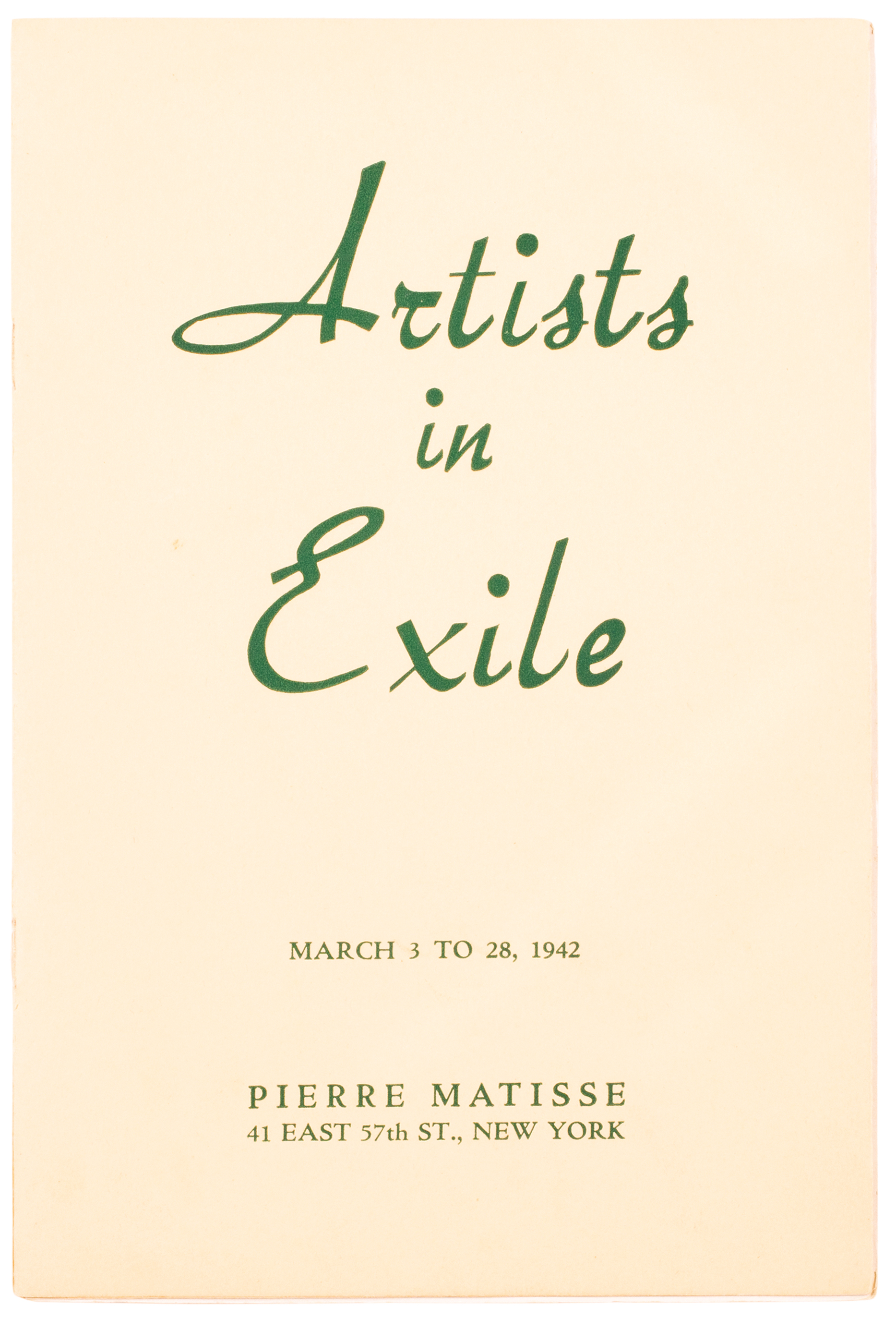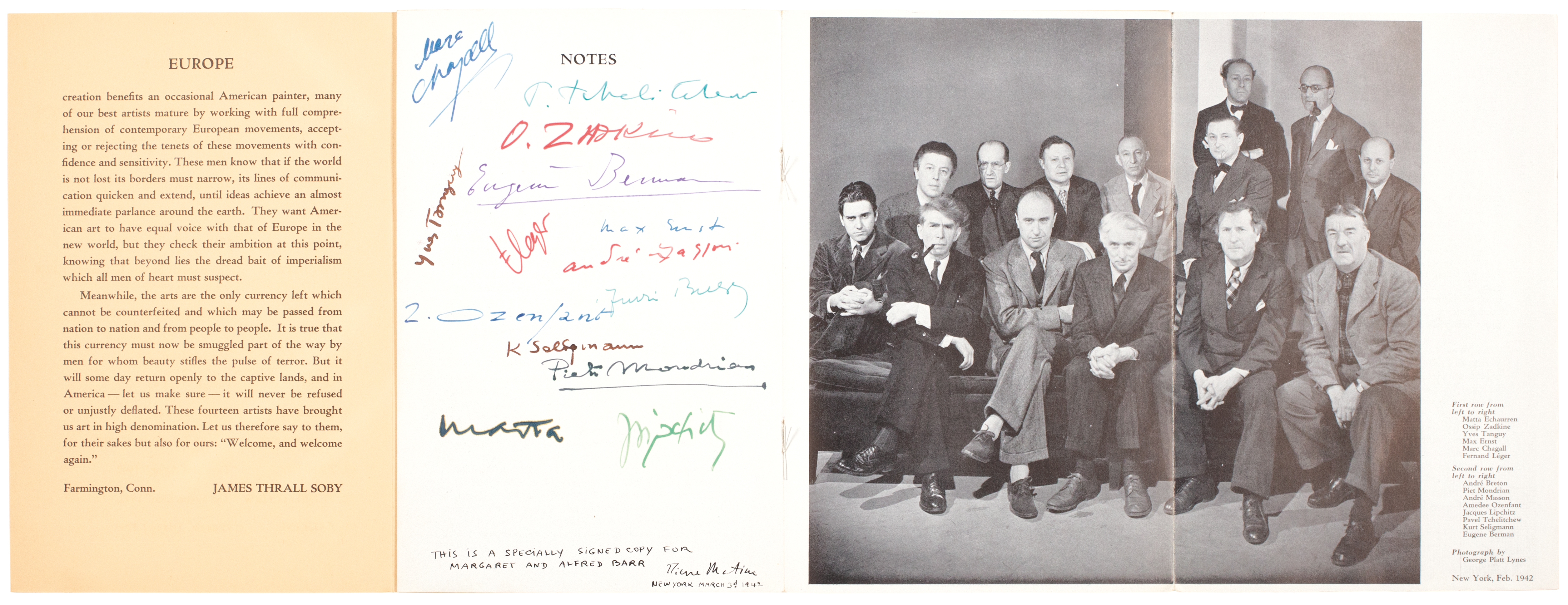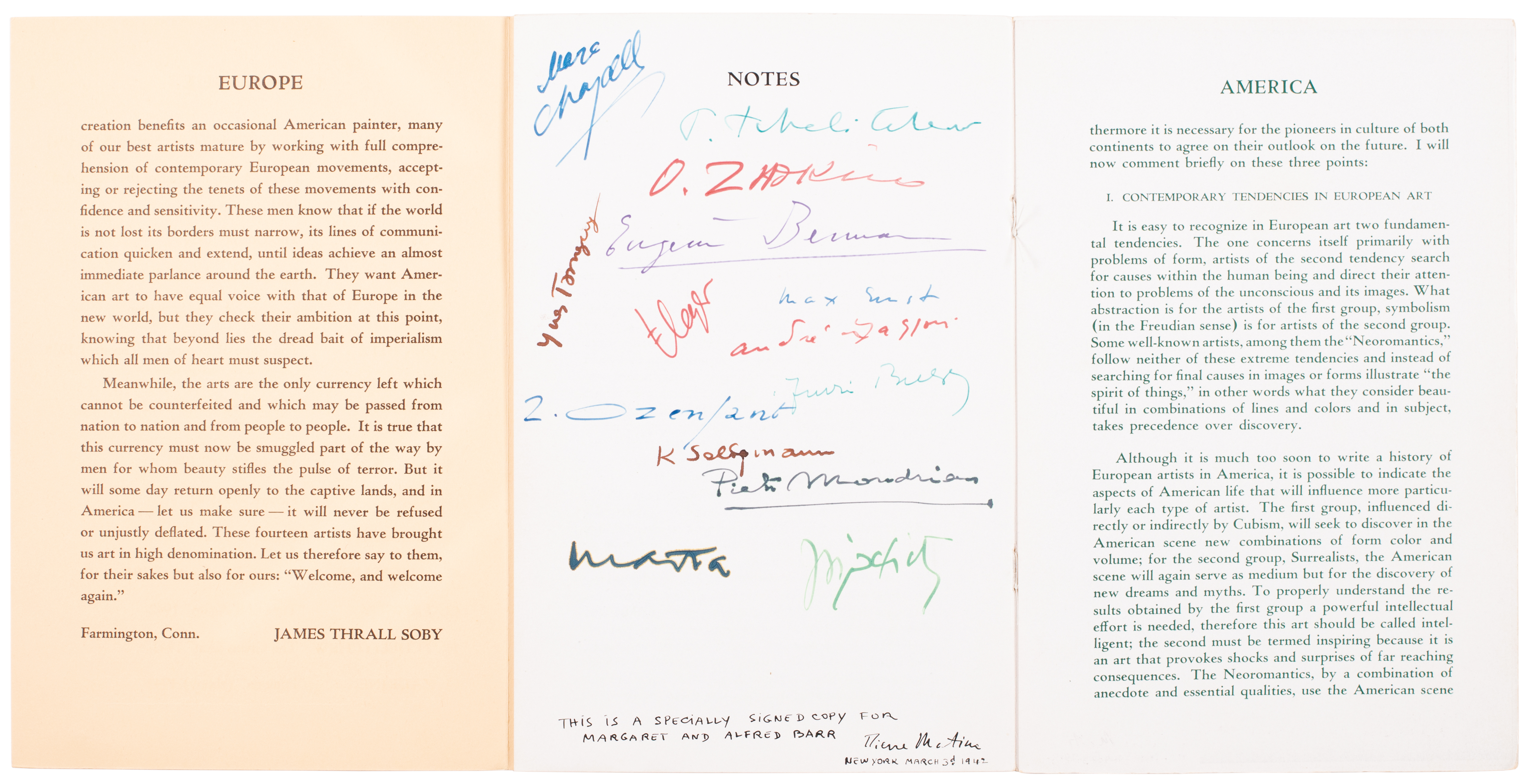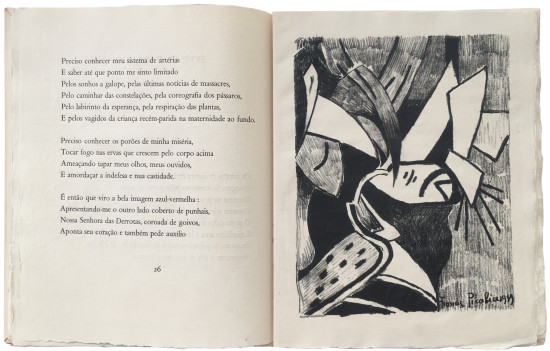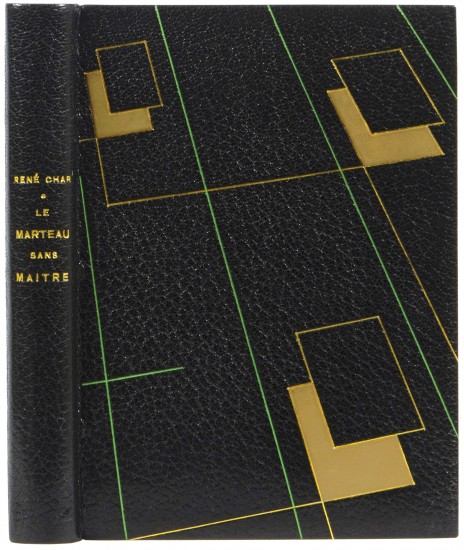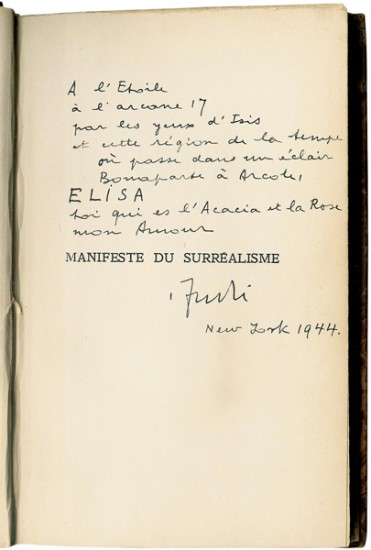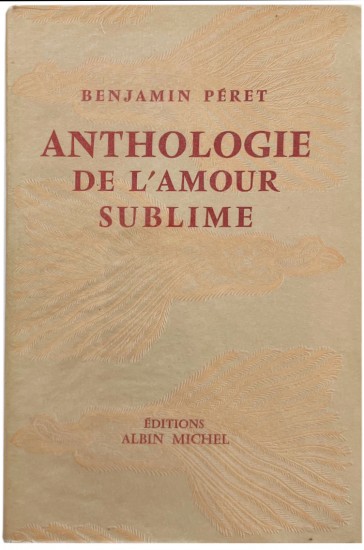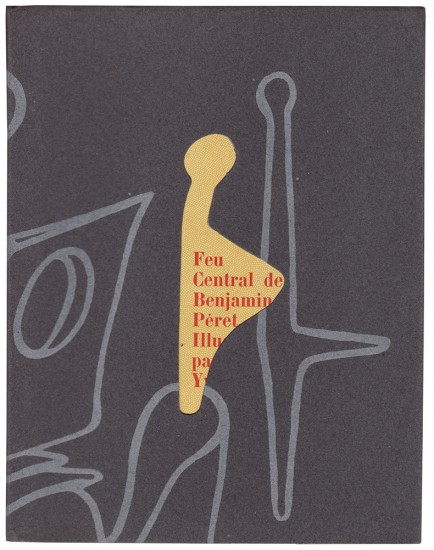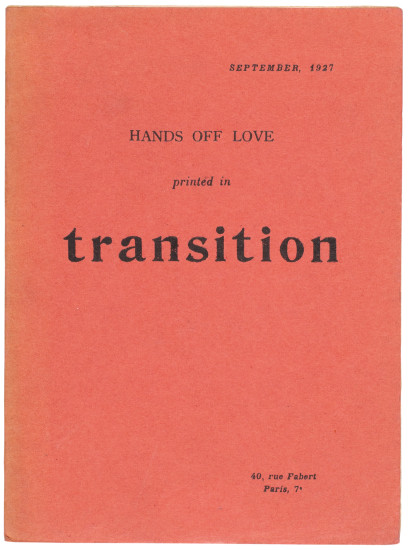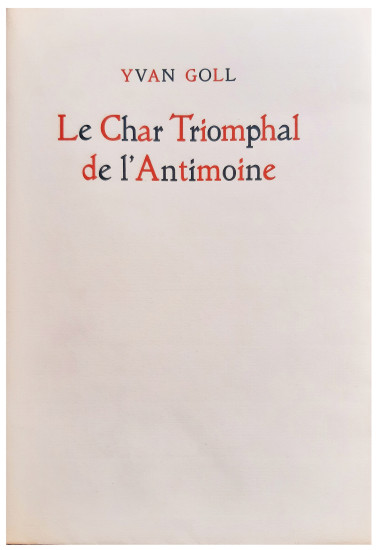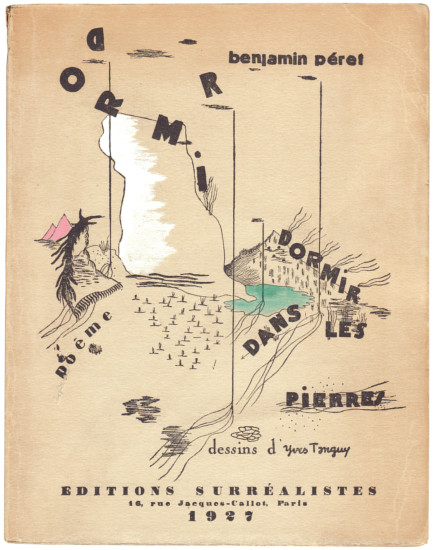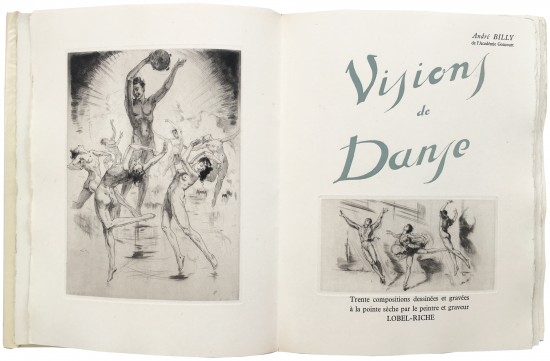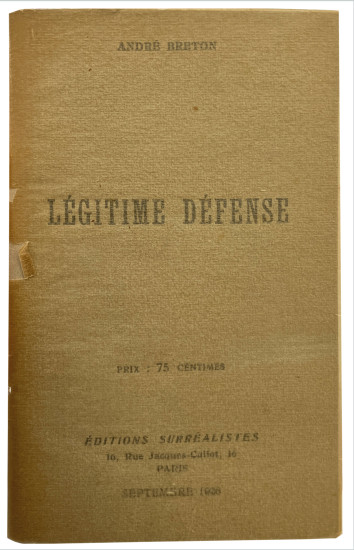Artists in Exile
Various Artists: Marc Chagall, Max Ernst, Yves Tanguy, André Breton, Piet Mondrian et al. Soby, Alfred Thrall and Nicolas Calas
New York. Pierre Matisse. 1942
Margaret and Alfred Barr's presentation copy of the catalogue for the exhibition they had done so much to enable, signed by all of the participating artists and by the gallerist Pierre Matisse.
Pierre Matisse's presentation is in black ink to the foot of the blank 'Notes' leaf bearing the signatures of the participating artists: 'THIS IS A SPECIALLY SIGNED COPY FOR MARGARET AND ALFRED BARR / Pierre Matisse / NEW YORK MARCH 3d 1942'.
The copy is signed in various colour inks by all of the participants: Marc Chagall (blue ink), Pavel Tchelitchew (turquoise), Ossip Zadkine (red), Eugene Berman (purple), Yves Tanguy (umber), Fernad Léger (red), Max Ernst (blue), André Masson (red), André Breton (turquoise), Amedée Ozenfant (blue), Kurt Seligmann (umber), Piet Mondrian (blue / black), Roberto Matta Echaurren (sepia) and Jacques Lipchitz (green).
It is significant that Margaret Scholari Barr, known as Marga, is listed first in the presentation by Pierre Matisse, as from 1940 she had taken charge of the ongoing operations to help artists and writers fleeing Europe. Each individual required 'a visa from the State Department, an affidavit of financial support, an affidavit of moral sponsorship vouching that he or she was in imminent danger and would not be inimical to U.S. interests, biographical sketches and letters of reference proving identities and the above, and at least 00 for ocean passage'. In conjunction with Curt Valentin (himself a beneficiary of the Barrs' help), Kay Sage (she married Yves Tanguy, another beneficiary in 1940), Kay Boyle and the Emergency Rescue Committee. Although no exact list of all of those who benefited from the help of the Barrs and the ERC remains extant, the majority of those who exhibited in 'Artists in Exile' did and the present catalogue represents a remarkable testament to their work, their efforts and their humanity.
The exhibition - perhaps an unlikely one given the range of participants and their differing outlooks, temperaments and sympathies - was held at Pierre Matisse, 41 East 57th Street, New York from 3rd - 28th March, 1942; each of the artists contributed one work undertaken after their arrival in the US, those by Masson and Lipchitz were courtesy of the Buchholz Gallery.
'Pierre Matisse did not run after publicity, but there were times when publicity ran after him. That is what happened in March 1942 when the Pierre Matisse Gallery in New York opened a show called 'Artists in Exile'. The title came fraught with pathos. So did the timing ... The word 'exile' had sharp teeth ... As he wrote to his father ... 'I stayed in town to hang the exiles' show today, instead of tomorrow. I took this precaution because all the exhibitors are right here in town. You know what they are like. They'd insist on giving me advice, and making sure that their own painting had a very goood place ... They number fourteen in all, and I got them together for a group photograph. As most of them didn't speak to one another when they were in France, I was afraid there would be trouble when they were all thrown together ... '. (Pierre Matisse quoted by John Russell).
'In no sense were they a band of brothers. But they did all agree to huddle together before the camera ... Given the variety of age, instinct, outlook, nationality, and relative achievement that was in question, the show was necessarily the equivalent of alpphabet soup. It was not likely that the fourteen artists in question would ever again be in the same room at the same time. Not only were they a tight fit in the space available, but solidarity was minimal. And yet, for an uneasy quarter of an hour, along with other unlikely conjunctions, André Masson sat next to Piet Mondrian, and Marc Chagall sat between Max Ernst and Fernand Léger. There was zero eye contact. Unsmiling, they sat stiff and still and stared straight ahead.' (James Russell).
' ... as the situation became increasingly desperate across the Atlantic [i.e. in Europe] in the 1930s, European artists, scholars, and arts workers began reaching out to MoMA for help. Working in concert with the Emergency Rescue Commitee (ERC), a group of New York-based activists, MoMA staff, including director Alfred H. Barr Jr. and his wife, art historian Margaret Scholari Barr, who led the initiative at the Museum, helped their peers in Europe secure the papers and funds necessary to immigrate to the US ... Scholari Barr made 'rescue' operations her full-time occupation in these years ... Artists including André Breton, Marc Chagall, Max Ernst and Piet Mondrian were able to relocate here through the aid of the Barrs and the ERC.' (MoMA catalogue).
'Sometimes doing more than the government was willing to do, MoMA was the final hope for many. The Barrs took advantage of their contacts and MoMA’s reputation to turn the museum into a literal protector and defender of modern art.' (Christina Eliopoulos).
[see Christina Eliopoulos' 'In Search of MoMA’s “Lost” History: Uncovering Efforts to Rescue Artists and Their Patrons', MoMA, 2016; see John Russell's 'Matisse: Father and Son', New York, 1999, pp. 201 - 203].
Pierre Matisse's presentation is in black ink to the foot of the blank 'Notes' leaf bearing the signatures of the participating artists: 'THIS IS A SPECIALLY SIGNED COPY FOR MARGARET AND ALFRED BARR / Pierre Matisse / NEW YORK MARCH 3d 1942'.
The copy is signed in various colour inks by all of the participants: Marc Chagall (blue ink), Pavel Tchelitchew (turquoise), Ossip Zadkine (red), Eugene Berman (purple), Yves Tanguy (umber), Fernad Léger (red), Max Ernst (blue), André Masson (red), André Breton (turquoise), Amedée Ozenfant (blue), Kurt Seligmann (umber), Piet Mondrian (blue / black), Roberto Matta Echaurren (sepia) and Jacques Lipchitz (green).
It is significant that Margaret Scholari Barr, known as Marga, is listed first in the presentation by Pierre Matisse, as from 1940 she had taken charge of the ongoing operations to help artists and writers fleeing Europe. Each individual required 'a visa from the State Department, an affidavit of financial support, an affidavit of moral sponsorship vouching that he or she was in imminent danger and would not be inimical to U.S. interests, biographical sketches and letters of reference proving identities and the above, and at least 00 for ocean passage'. In conjunction with Curt Valentin (himself a beneficiary of the Barrs' help), Kay Sage (she married Yves Tanguy, another beneficiary in 1940), Kay Boyle and the Emergency Rescue Committee. Although no exact list of all of those who benefited from the help of the Barrs and the ERC remains extant, the majority of those who exhibited in 'Artists in Exile' did and the present catalogue represents a remarkable testament to their work, their efforts and their humanity.
The exhibition - perhaps an unlikely one given the range of participants and their differing outlooks, temperaments and sympathies - was held at Pierre Matisse, 41 East 57th Street, New York from 3rd - 28th March, 1942; each of the artists contributed one work undertaken after their arrival in the US, those by Masson and Lipchitz were courtesy of the Buchholz Gallery.
'Pierre Matisse did not run after publicity, but there were times when publicity ran after him. That is what happened in March 1942 when the Pierre Matisse Gallery in New York opened a show called 'Artists in Exile'. The title came fraught with pathos. So did the timing ... The word 'exile' had sharp teeth ... As he wrote to his father ... 'I stayed in town to hang the exiles' show today, instead of tomorrow. I took this precaution because all the exhibitors are right here in town. You know what they are like. They'd insist on giving me advice, and making sure that their own painting had a very goood place ... They number fourteen in all, and I got them together for a group photograph. As most of them didn't speak to one another when they were in France, I was afraid there would be trouble when they were all thrown together ... '. (Pierre Matisse quoted by John Russell).
'In no sense were they a band of brothers. But they did all agree to huddle together before the camera ... Given the variety of age, instinct, outlook, nationality, and relative achievement that was in question, the show was necessarily the equivalent of alpphabet soup. It was not likely that the fourteen artists in question would ever again be in the same room at the same time. Not only were they a tight fit in the space available, but solidarity was minimal. And yet, for an uneasy quarter of an hour, along with other unlikely conjunctions, André Masson sat next to Piet Mondrian, and Marc Chagall sat between Max Ernst and Fernand Léger. There was zero eye contact. Unsmiling, they sat stiff and still and stared straight ahead.' (James Russell).
' ... as the situation became increasingly desperate across the Atlantic [i.e. in Europe] in the 1930s, European artists, scholars, and arts workers began reaching out to MoMA for help. Working in concert with the Emergency Rescue Commitee (ERC), a group of New York-based activists, MoMA staff, including director Alfred H. Barr Jr. and his wife, art historian Margaret Scholari Barr, who led the initiative at the Museum, helped their peers in Europe secure the papers and funds necessary to immigrate to the US ... Scholari Barr made 'rescue' operations her full-time occupation in these years ... Artists including André Breton, Marc Chagall, Max Ernst and Piet Mondrian were able to relocate here through the aid of the Barrs and the ERC.' (MoMA catalogue).
'Sometimes doing more than the government was willing to do, MoMA was the final hope for many. The Barrs took advantage of their contacts and MoMA’s reputation to turn the museum into a literal protector and defender of modern art.' (Christina Eliopoulos).
[see Christina Eliopoulos' 'In Search of MoMA’s “Lost” History: Uncovering Efforts to Rescue Artists and Their Patrons', MoMA, 2016; see John Russell's 'Matisse: Father and Son', New York, 1999, pp. 201 - 203].
[3 unnumbered leaves, one large and fold-out]. 8vo. (230 x 154 mm). Title to front cover, verso and interior of folding flap with text 'Europe' by James Thrall Soby, page (also to interior of wrapper) with 'Catalogue' with artist, title and date of each work, leaf of white paper with the text 'America' by Nicola Calas recto, verso with blank leaf with notes here with numerous signatures (see below), following fold-out spread with monochrome reproduction photograph by George Platt Lynes of the participating artists (see also below), recto and verso also with the text 'America' concluding on the inner rear wrapper. Original publisher's pale yellow printed wrappers with folding flap, titles to front cover in green, later green board slipcase.
#48674
